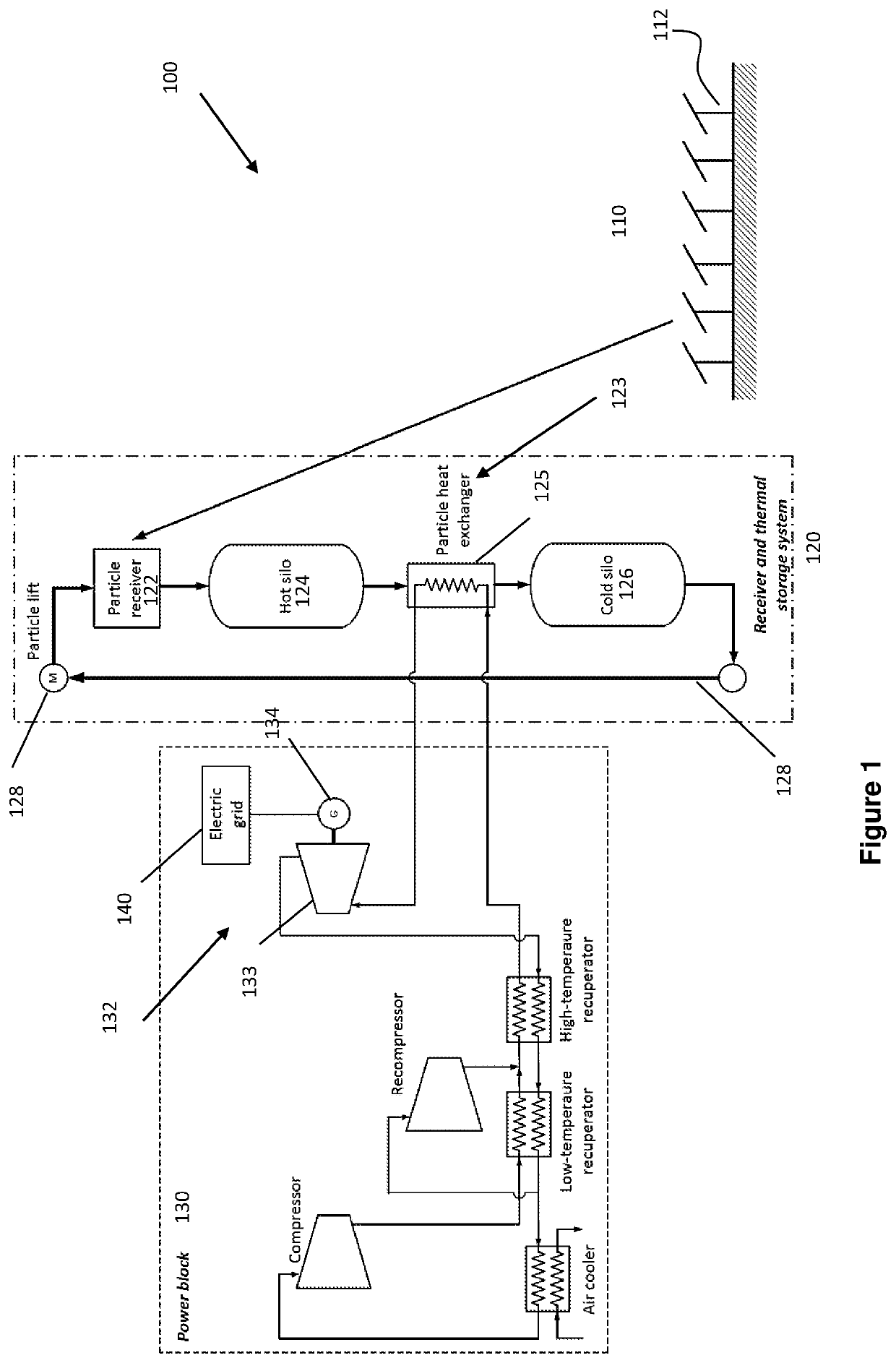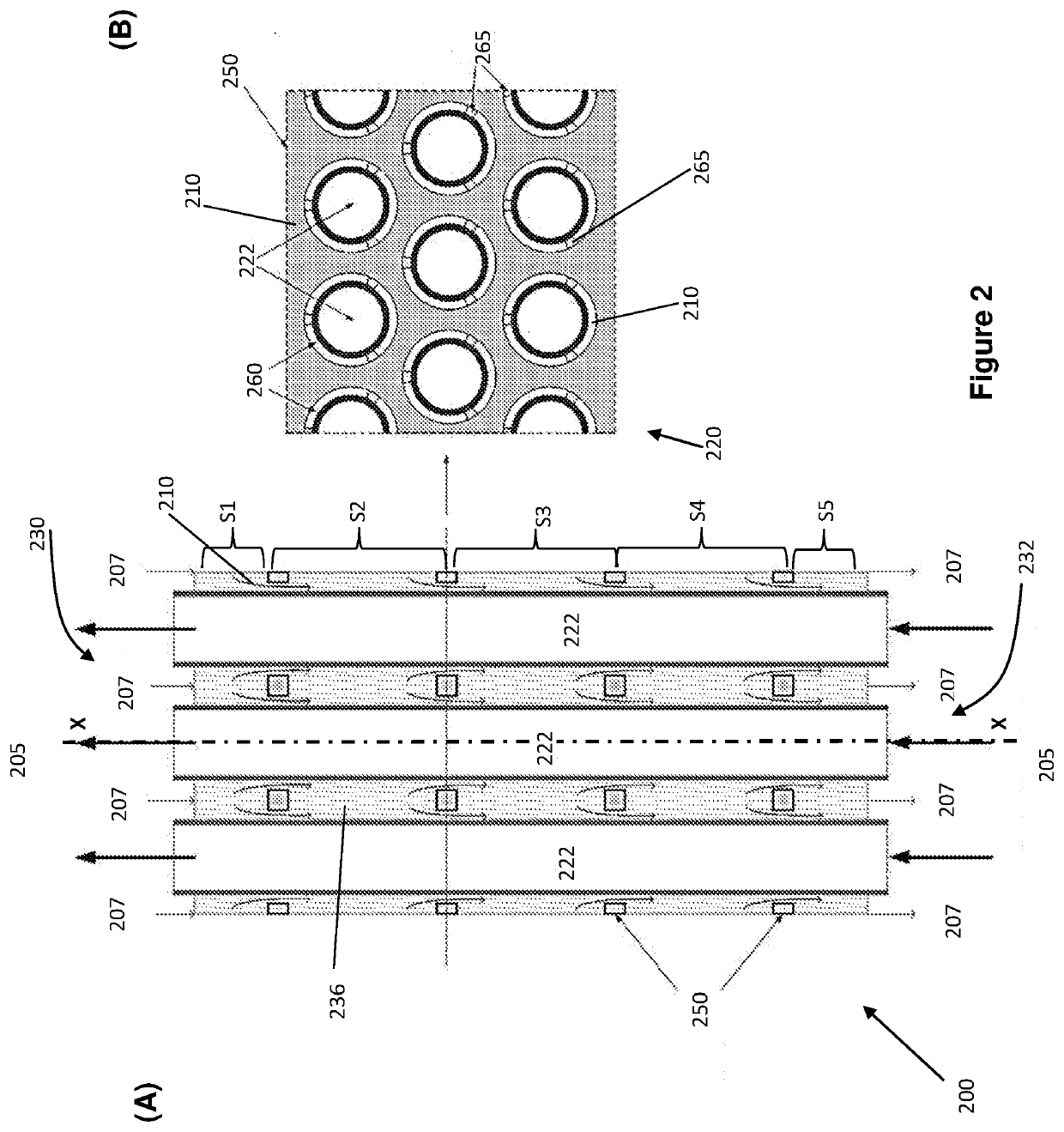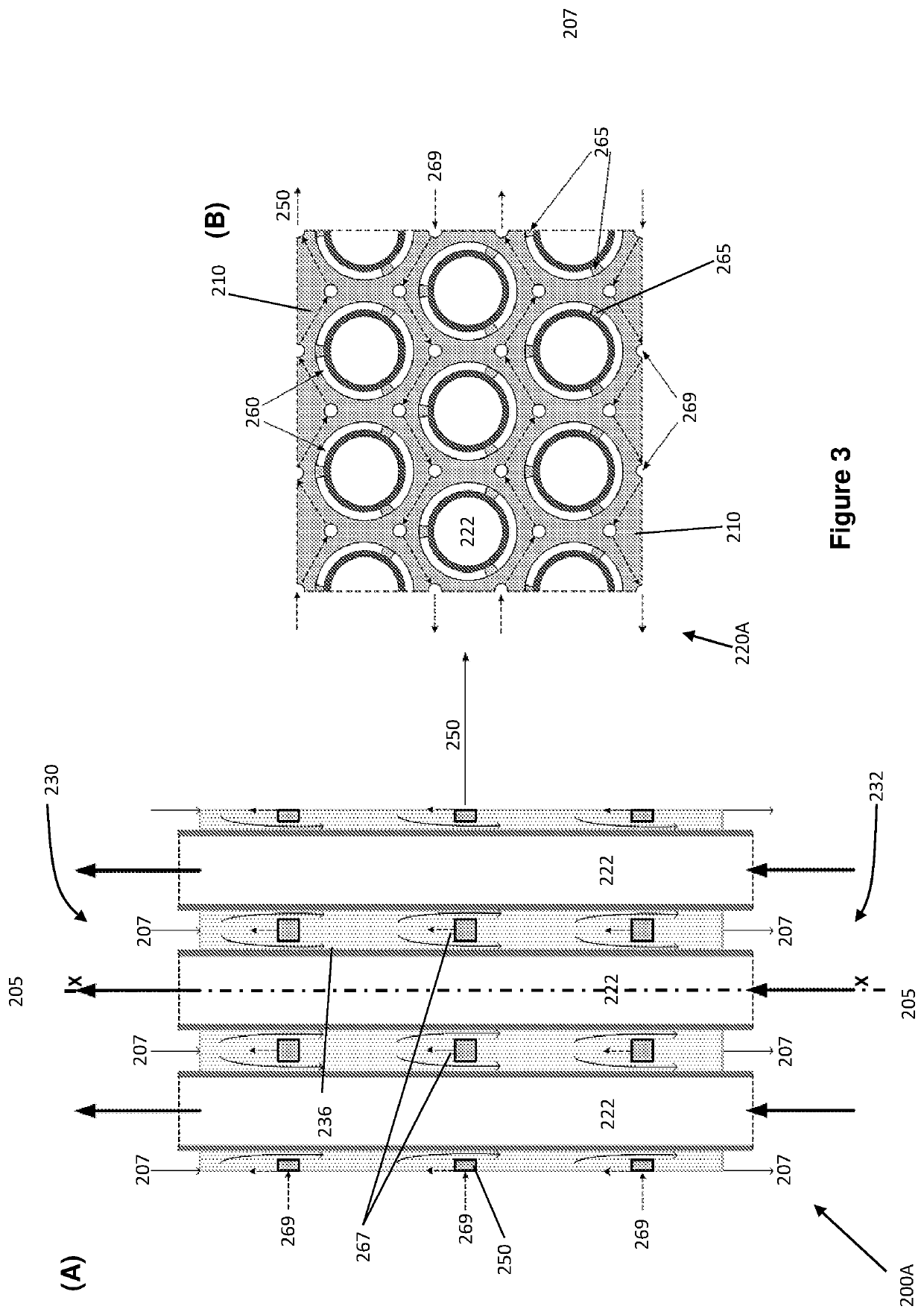Moving-bed particle heat exchanger
- Summary
- Abstract
- Description
- Claims
- Application Information
AI Technical Summary
Benefits of technology
Problems solved by technology
Method used
Image
Examples
example 1
Heat Transfer Analysis—2D Heat Transfer Model
[0097]FIG. 6 shows a heat transfer model of a single tube-in-bed PHX which solves a two-dimensional steady-state conservation energy equation. The model was developed to understand particle-side heat transfer and provide a guide for conceptual design. For the condition of axial symmetry with respect to the tube centre axis, the tube-in-bed PHX can be assumed to be a 2D axisymmetric problem instead of a 3D problem. In this model, the particles are assumed to behave as a single continuous medium moving downwardly under gravity along the outer surface of the tube (heat transfer wall). The heat transfer between a moving particle bed and a heat transfer wall takes place by thermal conduction in the radial direction. It can be composed of two thermal resistances: a particle-wall contact resistance (Rnw) where heat transfer occurs between the first layer of particles (higher porosity region considering spherical particles in contact to the wall)...
example 2
Heat Transfer Analysis—Staged Moving-Bed 2D Heat Transfer Model
[0105]FIG. 11 shows a schematic diagram of a staged moving-bed particle heat exchanger connecting in series. In this example, the PHX is divided into a number of stages (Nstage) and assumed full mixing of particles at the outlet before entering to the next stage. In each stage, the heat transfer between a moving particle bed and a heat transfer wall is calculated using the methodology mentioned in Example 1 by solving a two-dimensional steady-state conservation energy equation.
[0106]FIG. 12 shows a comparison of bulk-to-wall heat transfer coefficient (hp) as a function of particle velocity (up) for a single stage PHX, 4 stages PHX and 10 stages PHX. The total heat exchanger length (Lhx) for all three cases is set to be 2 m. The results reveal that as the particle velocity (up) increases, a series of shorter PHXs comparing to a single stage PHX enables enhancement of the particle-side heat transfer coefficient through re-...
example 3
Experimental Works—Cold Flow Test Rig (Embodiment 1)
[0107]Experimental works were undertaken to investigate particles flow behaviour in a heat exchanger configuration shown in accordance with FIG. 2. As illustrated in FIG. 13, an experimental rig was constructed to study particle movement through the heat exchanger in room temperature conditions (i.e. not using heated particles). For the flow visualisation, the housing and dividers of the test rig were made from clear polycarbonate, which configured to enclose particles flow and a bundle of metal tubes.
[0108]The experimental rig was tested with particles (300 μm ceramic proppants comprising 75% Al2O3, 11% SiO2, 9% Fe2O3, and 3% TiO) packed in the housing and an upper bin. Particles are released from the heat exchanger by opening the slide gate at the bottom of the test rig.
[0109]The results of one run are illustrated in FIGS. 13B (A) to (D) which show the progress of the top of the particle flow through the cold flow experimental ri...
PUM
 Login to View More
Login to View More Abstract
Description
Claims
Application Information
 Login to View More
Login to View More - R&D
- Intellectual Property
- Life Sciences
- Materials
- Tech Scout
- Unparalleled Data Quality
- Higher Quality Content
- 60% Fewer Hallucinations
Browse by: Latest US Patents, China's latest patents, Technical Efficacy Thesaurus, Application Domain, Technology Topic, Popular Technical Reports.
© 2025 PatSnap. All rights reserved.Legal|Privacy policy|Modern Slavery Act Transparency Statement|Sitemap|About US| Contact US: help@patsnap.com



